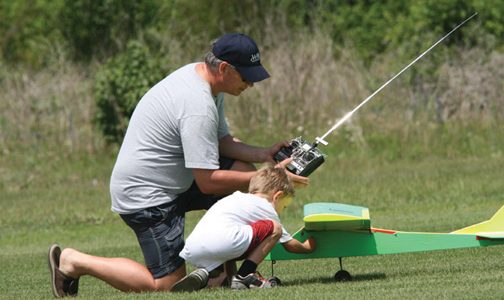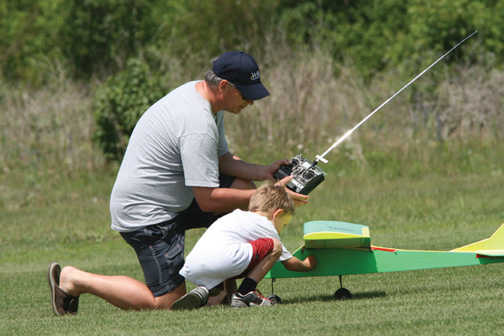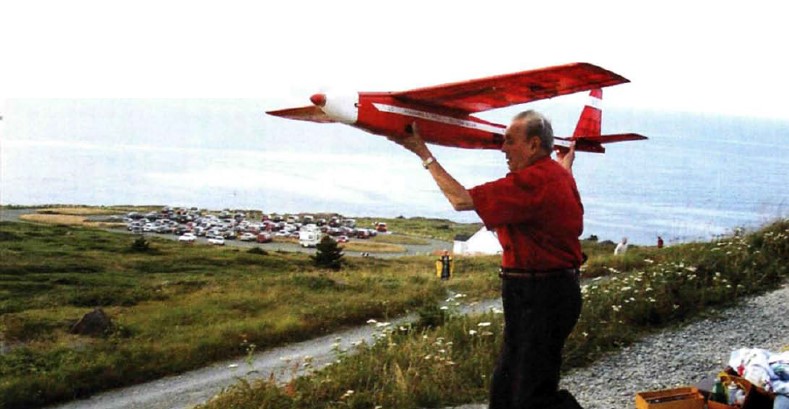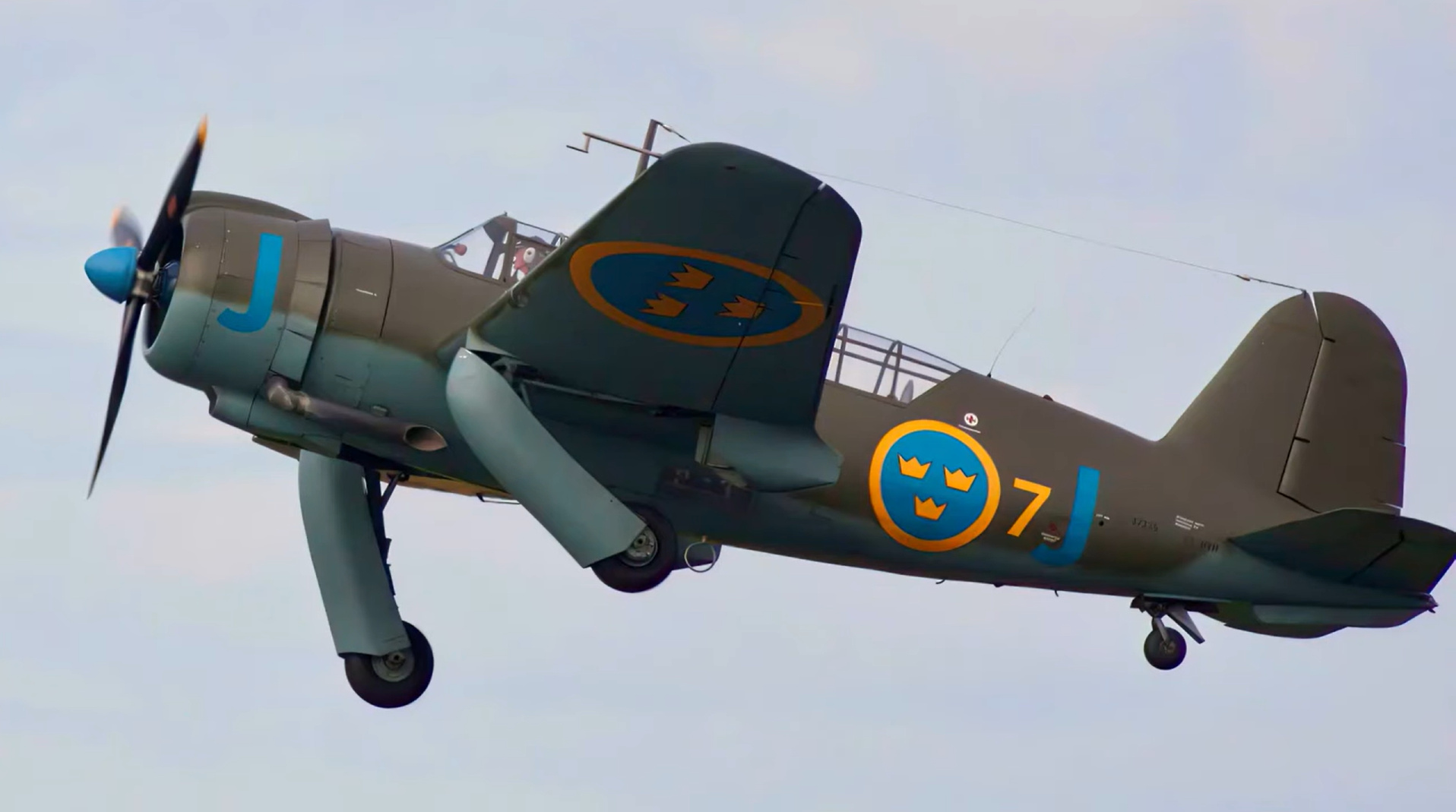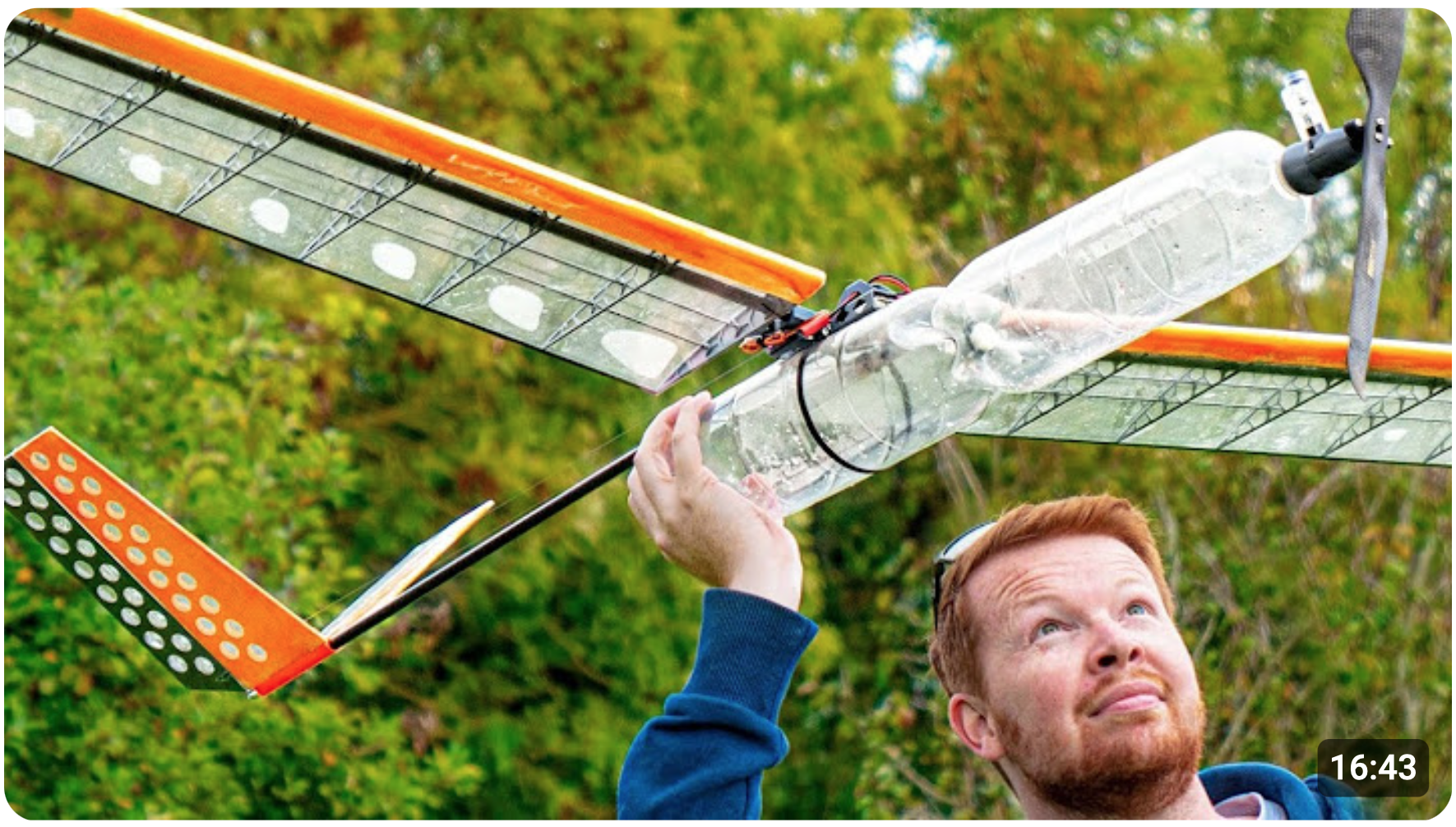GETTING STARTED IN RC — Expert advice for everyone!
Whether you’re a first-time flier or an RC veteran who wants to expand your horizons, trying something new can be intimidating. For this feature, we took readers’ “beginner” questions on everything from choosing a radio to getting into giant scale and asked our contributors to share their opinions and advice. Getting started just got a little easier!
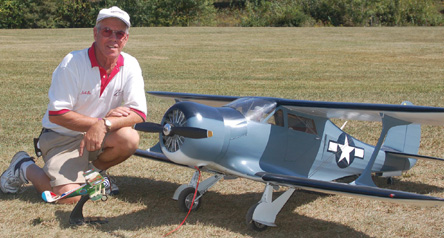
Nick Ziroli Sr., poses with his award-winning, giant-scale Beechcraft Staggerwing. It is powered by a reliable gasoline engine.
I want to fly giant-scale planes. Some of my friends say to use a big glow engine, while others suggest I go with gas. What do you recommend?
Personally, I prefer gas engines in my 6-foot-span or larger models. Glow engines have never been better, but they are still not as reliable as gas (or electric power). Gasoline engines are more user-friendly and certainly more economical than big displacement glow engines. I also prefer a magneto ignition rather than electronic ignition for simplicity and reliability. (There are no extra electronics to fail or extra batteries to charge.) Some magneto engines are a little heavier than electronic ignition engines but since I mainly design and fly big warbirds, it works in my favor. It’s a rare warbird that doesn’t require a healthy hunk of weight in the nose. Electronic ignition engines generally hand-start easier than those that are magneto equipped, but I usually use an electric starter. Also, an electronic engine may idle better, but I find that a properly adjusted carburetor allows either type to idle reliably low. —Nick Ziroli Sr.
Do you really have to break in an engine?

The short answer to this is: yes! Every engine, whether it’s glow or gas, 2-stroke or 4-stroke, will need to be broken in. However, many manufacturers suggest you break in the engine by flying it slowly and at a rich setting. While this may work, you really have no control over how hot or rich the engine is running when it is in the air. Bench running gives you complete control over how long the engine is running and allows you to monitor the temperature, so you can lean or richen it if needed. Take the time to break in your engines for longevity and performance. —John Reid
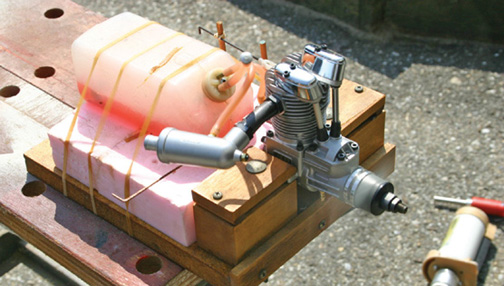
Proper engine break-in is extremely important.
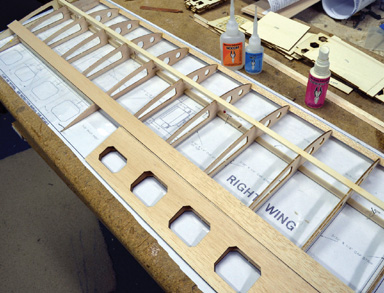
The first rule in kit building: start small and work your way up! (Photo by Jerry Smith)
I would like to build a model from a kit. What would you suggest as a first step? I do prefer glow-powered airplanes.

The big difference in our hobby from when I first got started is that many of today’s RC pilots have little or no experience in the workshop. When it comes to building airplane kits, I would start small and work your way up. Even if you prefer glow power, I would suggest starting with a medium-size electric plane and keeping it simple. Laser-cut kits are the easiest to put together as they often have lock-tab alignment. Tom Herr at Alien Aircraft (alienaircraft.com) has many kits to choose from, and I highly recommend his kits. Pick a plane that’s comparable to your pilot skill level.
You’ll also need a good, straight, warp-free building surface. Get an interior-grade hollow-core door from Home Depot, place it on a pair of sawhorses in the garage, and you’re set. You’ll also need basic hobby tools like a hobby knife and new blades, sandpaper, clothespins, modeling T-pins, a small hammer, a straight-edge ruler, and some CA glue and epoxy. Follow the instructions, and if you have questions, contact Tom or go to your hobby shop and ask the guy behind the counter. Once your model is assembled, it will also need to be covered. This is a great excuse to join a local hobby club as well. There you will find all the help you’ll need to build and finish your new kit-built airplane. —Gerry Yarrish
I’d like to learn to fly RC planes but I’m not sure where to start. Any advice?

Follow these three steps and you’ll be a full-fledged pilot in no time.
1. Find a local club and flying field (modelaircraft.org lists them by state and you can also Google “RC model plane” and the name of your town). Before you buy anything, visit the field and see whether most club members are flying glow or electric planes; their expertise is key to your success. If it’s an even split, then electric is a great choice for your first plane, but if the majority are flying glow, then that’s the way to go.
2. Armed with this information, you’re ready to start looking at planes. You’ll want to start with at least a 50-inch-span, high-wing, tricycle gear trainer that ideally comes with a radio and power system. If those aren’t included, buy the recommended equipment; don’t try to mix and match at this point. If you have a computer, I strongly recommend that you also buy a flight simulator.
3. After you assemble your plane and get in some practice on the sim, get back in touch with the club. Most have a flight training system with experienced instructors; they are your best bet for first-flight success. Good luck! —Debra Cleghorn
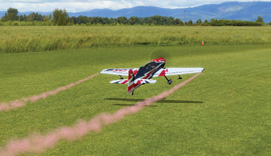
Flight sims like RealFlight are excellent learning and teaching tools for beginner RC pilots.
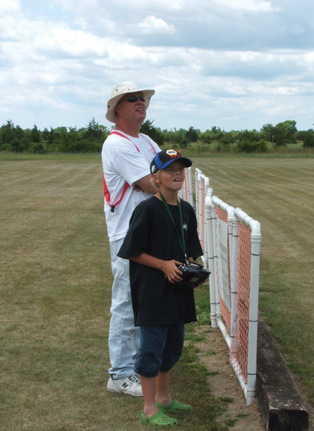
Instructor and student RC pilot — a great combo.
Can I learn to fly by myself without outside help?

Though it is possible to teach yourself to fly (especially with the help of flight sims), my advice to new RC pilots is to not try to learn to fly on their own. It is most important that newcomers find a local club or individual in their area to provide the necessary flight instruction required. This greatly increases the safety factor. I highly recommend them to join the AMA (Academy of Model Aeronautics) or, if they live north of the border, the MAAC (Model Aeronautics Association of Canada) before commencing with any RC flight training. —Rolly Siemonsen
I have a new computer radio and need some programming tips.

There are a few basic steps for programming a computer radio like the Spektrum DX8, and the same basic procedure can be used for other brands. First get into the “System Setup” menu and select “Model Select.” Then select the appropriate model type: Aircraft (Acro), Sailplane (Glider), or Helicopter (Heli). Now go to “Model Name” and enter a simple name to ID your model. Next, go to “Wing Type” and select your appropriate setting. Here there are usually several types of wing settings (dual aileron servos, flaps, flaperons, elevons, etc.), and this is often where you’ll set up the tail setting, e.g., dual elevator servos, V-tail configuration, etc. Now, bind your receiver to the transmitter. Plug the servos into the receiver and check them for proper direction. If any of the control surfaces move backward, use “Servo Reverse” in the “Function” menu to correct them. For dual rates and expo functions, start with the model’s instructions as a guide. —Rick Bell
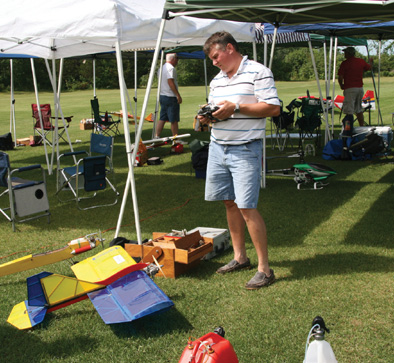
I want to get into helicopters. Should I start with a coaxial, fixed, or a collective-pitch heli?

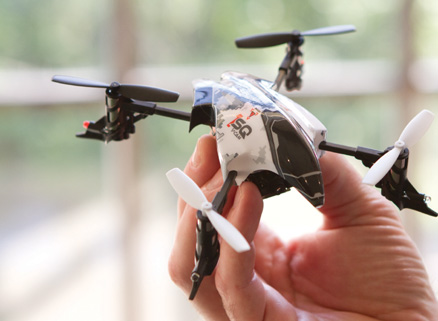
Micro quadrotors like the Heli-Max 1SQ are a great intro to helicopters!
Coaxial, fixed-pitch, and collective helis all have their place as training tools. In my opinion, coax helis are so docile that they’re of limited use as trainers, but loads of fun to fly in the house. Fixed-pitch helis aren’t as smooth as collective-pitch machines because of the constantly changing head speed, but they’re more resistant to damage. With the advent of flybarless, micro, collective-pitch helis, you can have the best of all worlds: a durable heli that can be flown anywhere. I recommend that beginners start with a micro quad and then transition to collective pitch. A good flight simulator should be used in parallel to build proficiency
Micro quadrotors like the Heli-Max 1SQ and Blade Nano QX are also a nice training option. While not true helis, quads will familiarize you with heli control inputs, forward flight, and nose-in hovering. They’re very durable yet fast enough to fly outdoors in moderate wind. —Jim Ryan
I have been flying my new RC heli for a few weeks now, and I’m not sure when I should remove the training gear. What do you think?

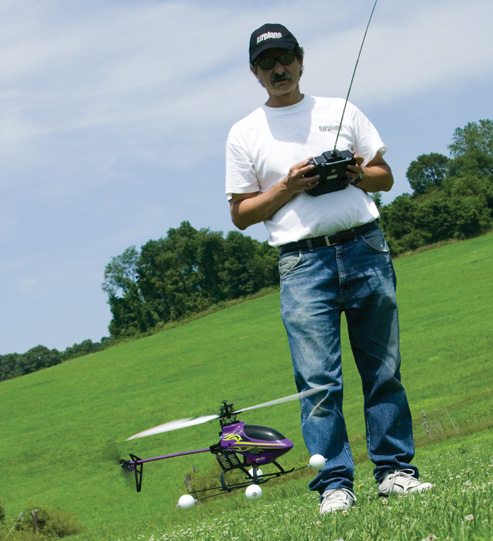
Flying RC helis with trainer gear is a good place to start, but you want to remove them as soon as you can.
Over the years, I have helped many people learn to fly helicopters, and it’s amazing how good they get, and yet they won’t remove the training gear. They are so used to flying with it that the gear becomes almost a security blanket, even though the pilot is perfectly comfortable hovering several feet off the ground and doing figure-8 circuits. At that distance off the ground, the training gear doesn’t offer any protection.
Initially, the training gear is used as a wide bumper for the helicopter to protect it from hitting the ground. But after a little practice, you get comfortable with your ability to control the helicopter and can keep it relatively stable, and land and take off without tipping over. Once you can do this, it’s time to remove the training gear or it will actually impede your learning process. Certainly no one wants to remove the training gear and have an accident, but that chance must be taken at some point. The longer you keep the training gear on the helicopter, the more psychologically dependent you become on it. Also, you rely on the wide gear to determine the attitude of the helicopter, therefore making the transition to normal flying even harder. —Paul Tradelius
What would you recommend for getting started with warbirds?

WW I aircraft are fairly easy to build and lots of fun to fly. Unlike the “heavy metal” WW II warbirds that require lots of balsa sheeting and finishing with fiberglass cloth and resin, WW I models are framed up and covered with a variety of easy-to-use materials. Also, there are no flaps or retractable landing gear to worry about either. The vast majority of WW I aircraft were designed as biplanes (two wings), and many only require the basic four channels that any sport aircraft uses: rudder, elevator, ailerons, and throttle. Although some had one wing (monoplanes) or three wings like the Fokker Dr.1 Triplane, it’s best to pick a biplane design to start with. In addition, I would narrow the field further by choosing an aircraft that has a round engine cowl, as most of the kits available supply either a formed plastic or fiberglass cowl, and some even have cowls made of aluminum. A flat firewall and a round cowl make installing and working on the engine a fairly easier task. —Sal Calvagna
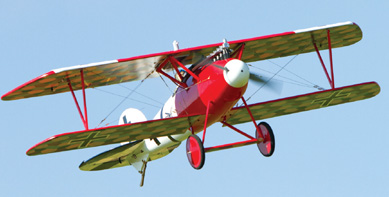
World War I biplanes like this E-flite Albatros are a great way to get into RC warbird flying.
I’m new to the hobby and using an old 72MHz radio I bought at a yard sale. Should I upgrade to 2.4GHz? If so, can I mix and match brands of 2.4GHz equipment?
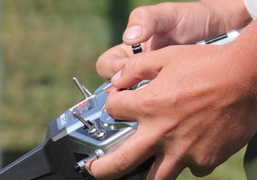
Flying with 2.4GHz radio systems provide increased protection against radio interference, but you have to use the same brand transmitters and receivers.

When I lost a model due to another pilot turning on their (same channel) 72MHz transmitter during my flight, I decided (after a few bad words) that 2.4GHz was the way to go. Prices are quite fair these days and the options are abundant, so I think that switching over to 2.4GHz is a worthwhile investment. As for mixing equipment, you will need to use the same brand transmitter and receiver because each radio brand uses a unique method of transmitting. —Jason Benson
Do I need to cool my batteries before I charge them again?

Yes, but you don’t need to do anything special like put them in a cooler, etc. Just let them sit in the shade until they reach ambient temperature. High-capacity discharge/charge packs are more tolerant to being abused, but all benefit from a little TLC. Charge your packs at 1C whenever possible and never over-discharge them. Also, always balance charge when possible and never allow the pack to exceed 140F degrees. Remember that the cells in the center of the pack will take longer to cool than the outer cells. They will also heat up more quickly. —Greg Gimlick
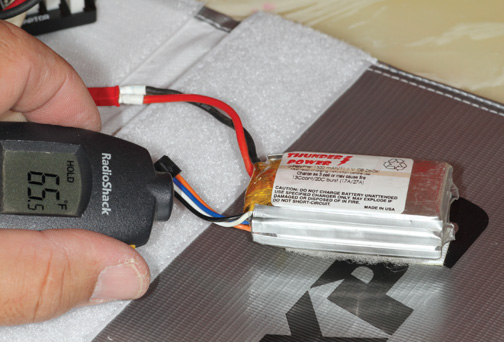
Don’t recharge you LiPo packs until they have cooled down.
Can I use a 30-amp speed control in my plane if it draws 50 amps at full-throttle, but I know I’ll always fly at half-throttle?

No, this is a bad idea and one that is much harder on the components of the speed control. Speed controls are more efficient and generate less heat (wasted power) when run close to full-throttle. Always size your speed control to match the full-throttle current of the setup. —Greg Gimlick

Electronic speed controllers have to be matched for the power system and the amount it current is draws at full throttle.
What makes a good beginner aerobatic RC airplane?

I recommend that you choose a plane that has all the positive traits of a trainer with the added benefit of a symmetrical or semi-symmetrical wing. Aerobatics expand your flight envelope to include basic inverted and extended vertical flight. An airplane with a fully symmetrical wing helps with inverted flight and also requires less down-elevator input as compared to a flat-bottom or semi-symmetrical wing. Your plane should have neutral stability and an adequate power-to-weight ratio. I like the basic Stik and Ugly Stik planes with fully symmetrical wings. They have a basic shoulder wing design, tricycle landing gear, and handle like an advanced trainer. They can easily perform basic IMAC maneuvers, and using the high range of the power recommendations will help to pull the plane through lower energy maneuvers. —Aaron Ham
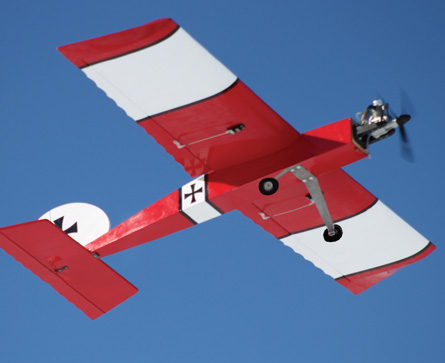
There are plenty of ARF Stik airplanes available today. They are a great place to start when you get into sport aerobatics.



